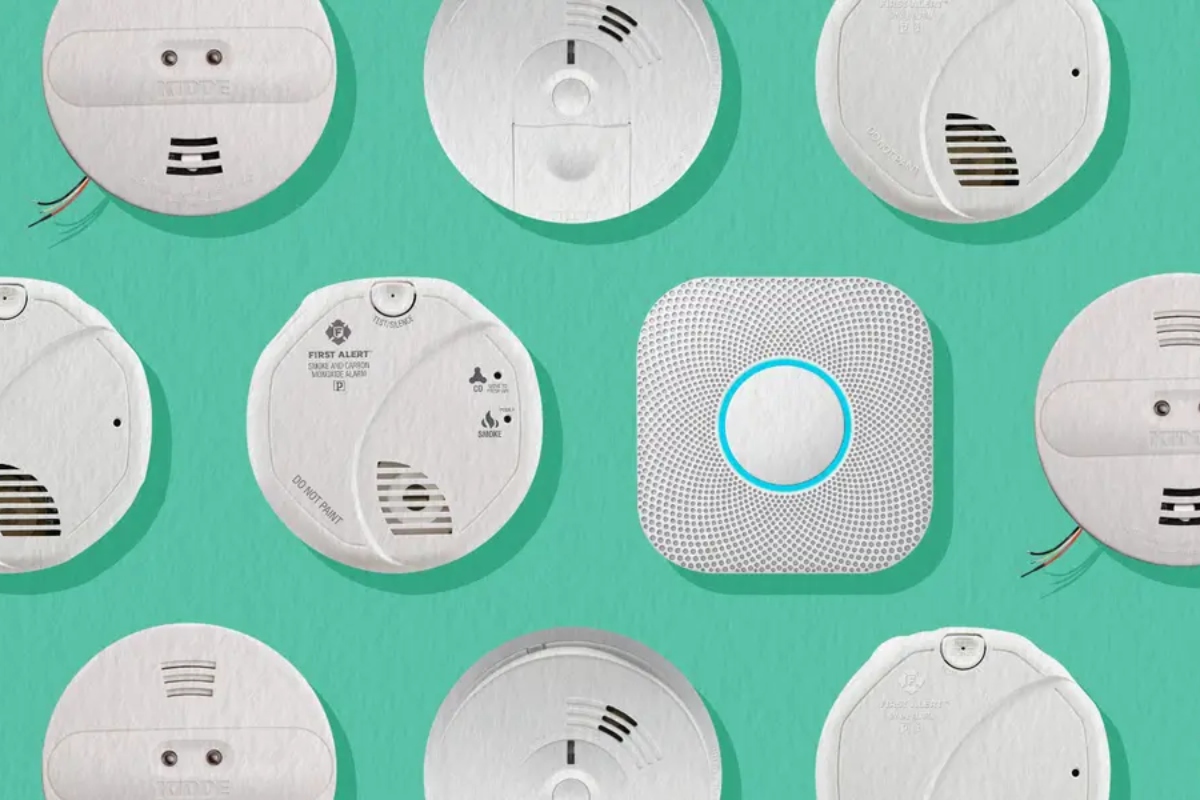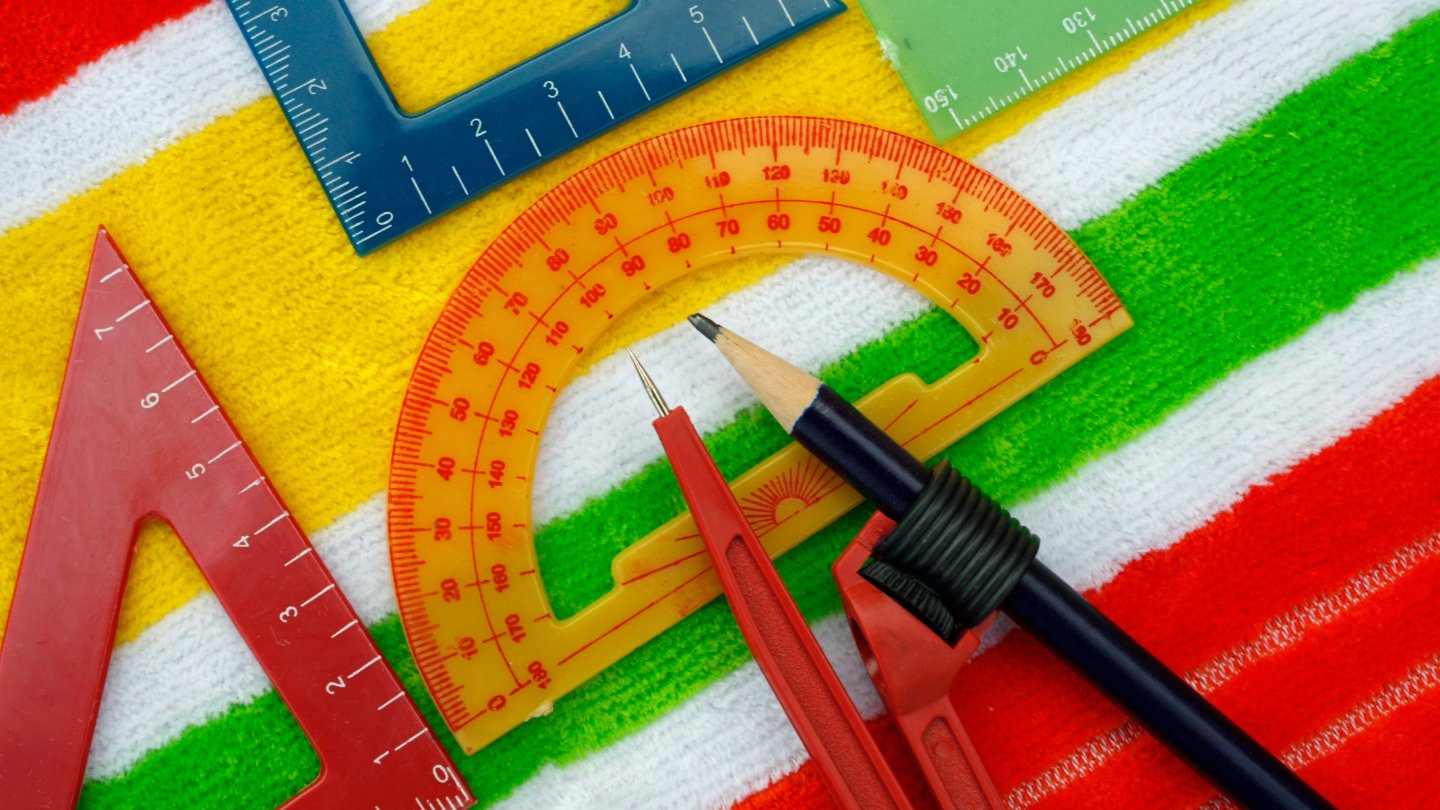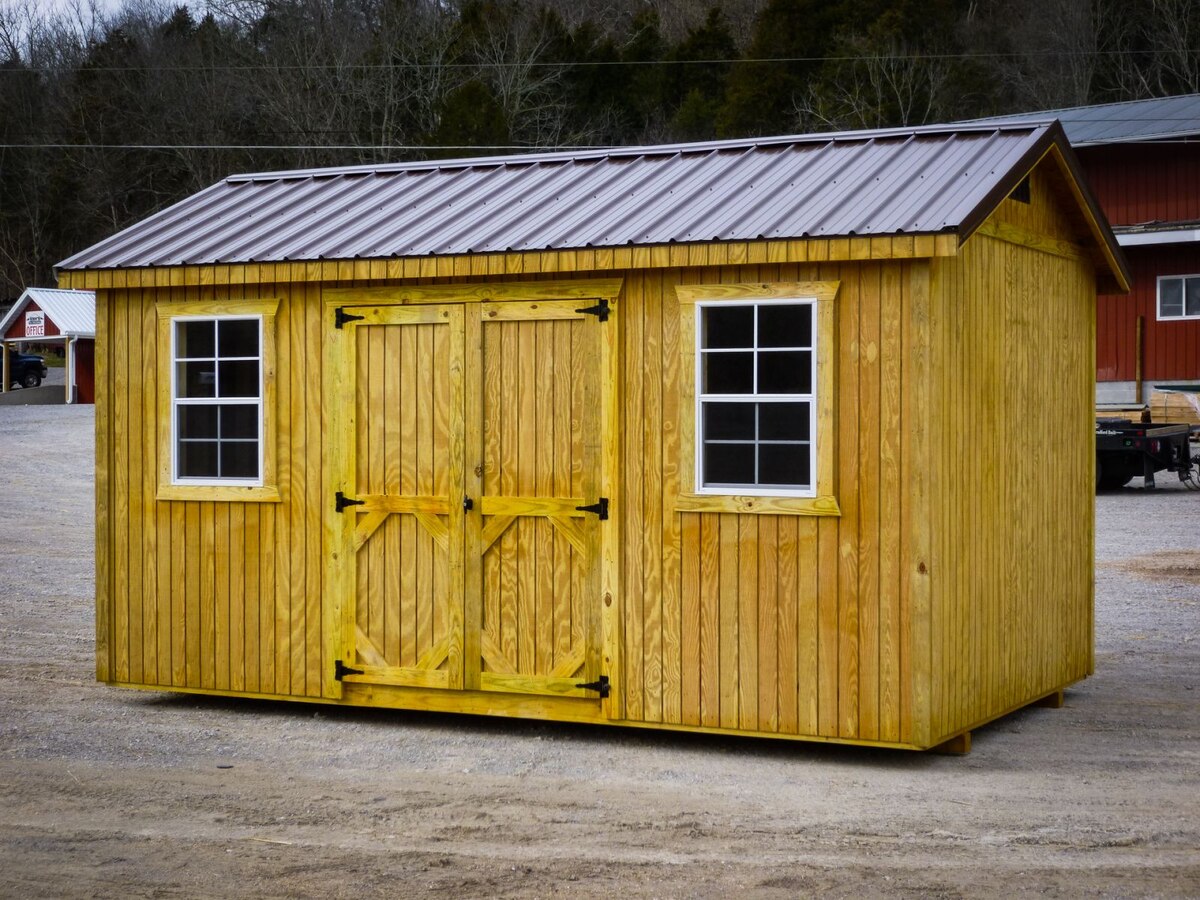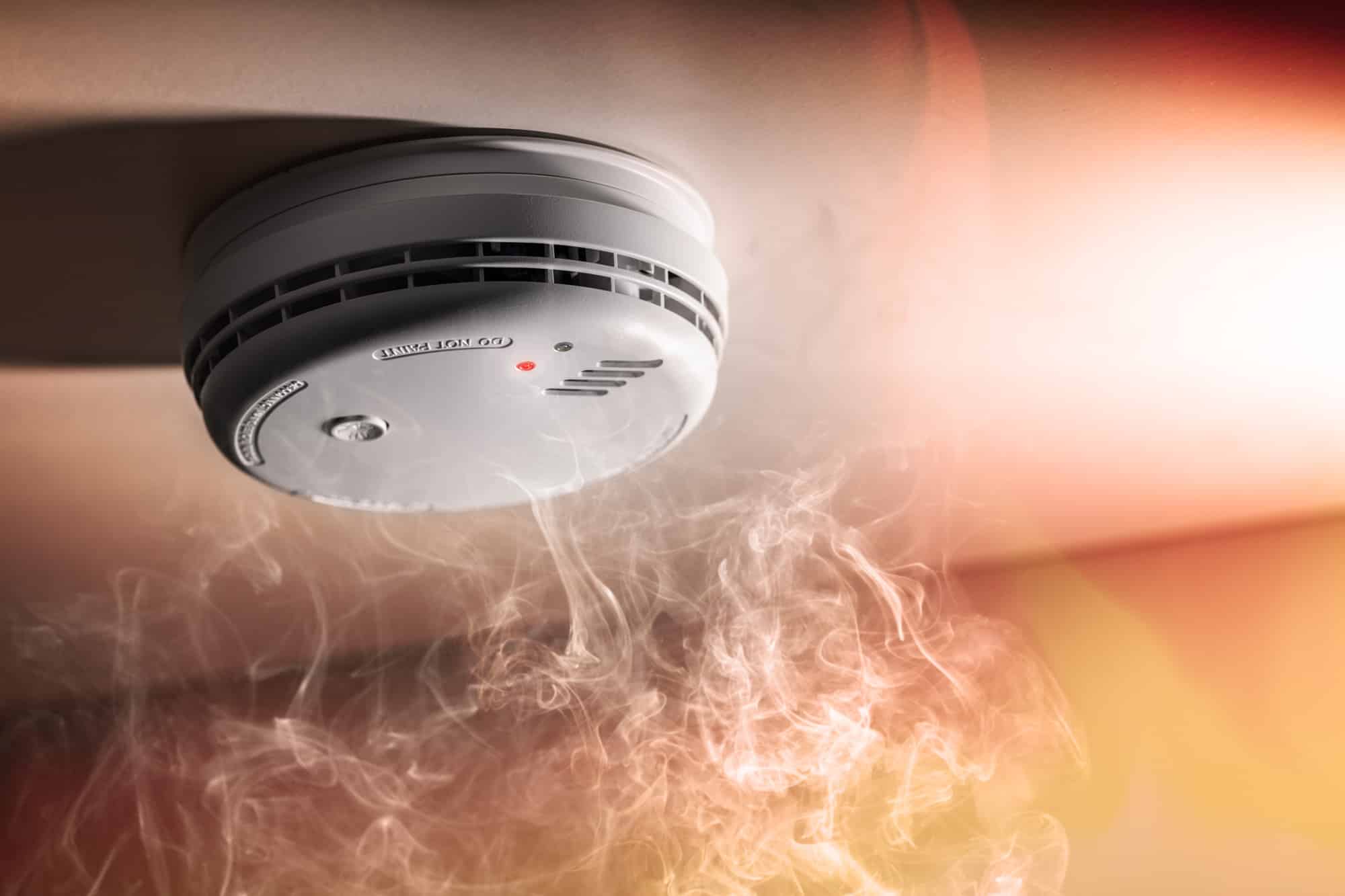

Articles
What Does A Smoke Detector Look Like
Modified: February 24, 2024
Learn what a smoke detector looks like and why it's crucial for your safety. Read our informative articles on smoke detectors now!
(Many of the links in this article redirect to a specific reviewed product. Your purchase of these products through affiliate links helps to generate commission for Storables.com, at no extra cost. Learn more)
Introduction
A smoke detector is a vital device that plays a crucial role in keeping our homes and workplaces safe. It serves as an early warning system, alerting us to the presence of smoke and potential fire hazards. While we often know the importance of having smoke detectors installed, many people don’t have a clear understanding of what a smoke detector actually looks like and how it functions.
In this article, we will explore the different aspects of smoke detectors, from their appearance to their functionality. We will delve into the components that make up a smoke detector, how they work, and where they should be placed for optimum effectiveness. Additionally, we will discuss the importance of regular maintenance and testing to ensure the reliability of these devices.
Understanding the basic features and workings of smoke detectors is essential for homeowners, renters, and business owners alike. By gaining knowledge about smoke detectors, we can make informed decisions about which type of detector to purchase and where to install it.
So, let’s embark on this journey to discover the ins and outs of smoke detectors and gain a deeper understanding of their significance in fire safety.
Key Takeaways:
- Understanding the importance, types, components, and maintenance of smoke detectors is crucial for maximizing their effectiveness in safeguarding homes and workplaces from potential fire hazards.
- Proper placement, regular testing, and addressing potential issues with smoke detectors are essential steps in ensuring reliable fire detection and early warnings, contributing to overall fire safety.
Read more: What Does A Vape Smoke Detector Look Like
Importance of Smoke Detectors
Smoke detectors are not just passive devices that blend into the background of our homes or workplaces. They are, in fact, life-saving devices that can make a critical difference in the event of a fire. The importance of smoke detectors cannot be overstated, as they provide early warning of potential fire hazards, allowing occupants to evacuate safely and quickly.
One of the primary reasons why smoke detectors are so crucial is the fact that fires can spread rapidly. In a matter of minutes, a small fire can grow into a full-blown inferno, engulfing a building and jeopardizing the lives of all those inside. In this scenario, every second counts. A functioning smoke detector can detect the presence of smoke and sound an alarm, providing occupants with valuable time to escape before conditions become life-threatening.
Smoke detectors are particularly essential in homes and buildings where people sleep, as fires can break out during the night when occupants are most vulnerable. The loud and piercing alarm of a smoke detector can wake sleeping individuals, giving them the opportunity to evacuate and call for help. This early warning system is especially critical for households with children and the elderly, who may have difficulty responding quickly in the event of an emergency.
Furthermore, the importance of smoke detectors extends beyond protecting human lives. They are also vital for the early detection of fires, which can significantly reduce property damage. By alerting occupants and emergency services promptly, smoke detectors play a crucial role in facilitating a swift response to contain and extinguish the fire, minimizing the impact on the structure and its contents.
It’s important to recognize that having smoke detectors in our homes and workplaces is not only a legal requirement in many jurisdictions, but it also demonstrates a commitment to safety. By installing and maintaining functional smoke detectors, we show that we prioritize the lives and well-being of ourselves, our families, and our colleagues.
In summary, smoke detectors are essential devices that can mean the difference between life and death. They provide early warning of potential fire hazards, enabling timely evacuation and reducing the risk of injury or fatalities. Additionally, they aid in the early detection of fires, leading to swift response and minimized property damage. The importance of smoke detectors cannot be emphasized enough, and every home and workplace should have these life-saving devices installed and regularly maintained.
Types of Smoke Detectors
There are different types of smoke detectors available in the market, each utilizing different technologies to detect the presence of smoke. Understanding the various types of smoke detectors can help us make an informed decision when choosing the most suitable option for our homes or workplaces.
1. Ionization Smoke Detectors: Ionization smoke detectors are the most common type and are often found in residential buildings. These detectors contain a small amount of radioactive material that ionizes the air inside the unit. When smoke particles enter the ionization chamber, they disrupt the flow of ions, triggering the alarm. Ionization smoke detectors are sensitive to small particles produced by fast-burning fires.
2. Photoelectric Smoke Detectors: Photoelectric smoke detectors use a different detection method. They employ a light source and a light-sensitive sensor. When smoke particles enter the chamber, they scatter the light, reflecting it onto the sensor and triggering the alarm. Photoelectric smoke detectors are highly effective at detecting slow-burning, smoldering fires.
3. Dual Sensor Smoke Detectors: Dual sensor smoke detectors combine both ionization and photoelectric technologies to provide comprehensive smoke detection. These detectors offer the advantages of both types, making them highly reliable in detecting various types of fires, whether they be fast-burning or slow-burning.
4. Heat Detectors: Heat detectors are another type of fire detection device. Unlike smoke detectors, they do not detect smoke particles. Instead, they are designed to activate when they sense a significant rise in temperature. Heat detectors are commonly used in areas where smoke or dust can cause false alarms, such as kitchens or garages.
5. Combination Smoke and Carbon Monoxide Detectors: Some smoke detectors also have the ability to detect carbon monoxide (CO), a deadly gas that is odorless and colorless. These combination detectors offer dual protection against both smoke and CO, allowing for early detection of both fire and carbon monoxide poisoning.
It is important to note that different smoke detectors may be more suitable for specific areas or environments. For example, photoelectric smoke detectors are recommended for use in kitchens or near bathrooms to reduce false alarms caused by steam or cooking. It is advisable to consult local fire safety regulations and guidelines to choose the appropriate type of smoke detector for each area within a building.
By understanding the various types of smoke detectors available, we can make an informed decision when it comes to selecting the most effective and appropriate option for our specific needs. Investing in the right type of smoke detector can significantly enhance our safety and provide peace of mind.
Components of a Smoke Detector
A smoke detector consists of several key components that work together to detect the presence of smoke and trigger an alarm. Understanding these components can help us gain a better understanding of how smoke detectors function and why regular maintenance is crucial for their effectiveness.
1. Smoke Sensor: The smoke sensor is the primary component of a smoke detector. It can be either an ionization chamber or a photoelectric sensor, depending on the type of detector. The smoke sensor is responsible for detecting smoke particles in the air and initiating the alarm system.
2. Alarm: The alarm is the audible signal produced by the smoke detector when smoke is detected. It is typically a loud, distinctive sound designed to alert occupants of the building to the potential fire hazard. The alarm serves as a vital warning to evacuate immediately and seek safety.
3. Power Source: Smoke detectors are powered either by batteries or by being connected to the electrical system of the building. Battery-powered smoke detectors are common in residential settings as they provide protection even during power outages. Hardwired smoke detectors, on the other hand, are directly connected to the building’s electrical system and often have a backup battery for emergencies.
4. Control Panel: Some smoke detectors, particularly those used in commercial buildings, may be connected to a central control panel. The control panel monitors the status of various smoke detectors throughout the building and can provide real-time information about the location of the detected smoke.
5. Test Button: Most smoke detectors have a test button that allows users to manually test the functionality of the device. This button can be pressed to simulate the presence of smoke and ensure that the alarm system is in working order. Regularly testing smoke detectors is crucial for ensuring their reliability.
6. Indicator Light: Smoke detectors often have an indicator light that provides information about the status of the device. It may indicate that the smoke detector is powered on, has a low battery, or is in alarm mode. The indicator light helps users identify any issues or malfunctions with the smoke detector.
7. Mounting Bracket: The mounting bracket is used to securely attach the smoke detector to the ceiling or wall. It ensures that the detector is properly positioned to effectively detect smoke. Follow the manufacturer’s instructions for the correct placement and installation of the mounting bracket.
Understanding the components of a smoke detector enables us to recognize the importance of regular maintenance and testing. It is crucial to ensure that the smoke detector is powered, the alarm is functioning correctly, and the sensor is not obstructed by dust or debris. By maintaining and testing these components regularly, we can rely on the smoke detector to provide early warning in the event of a fire and safeguard the lives of occupants and the property.
How Smoke Detectors Work
Smoke detectors are designed to detect the presence of smoke, which is an indicator of a potential fire hazard. Understanding how smoke detectors work can help us appreciate the technology behind these life-saving devices.
1. Ionization Smoke Detectors: Ionization smoke detectors use ionization chambers, which contain a small amount of radioactive material, typically americium-241. This radioactive material emits alpha particles, which ionize the air inside the chamber. When smoke particles enter the chamber, they disrupt the flow of ions, reducing the current between two charged plates. This change in current triggers the alarm system, indicating the presence of smoke.
2. Photoelectric Smoke Detectors: Photoelectric smoke detectors employ a different method of smoke detection. They consist of a light source, typically an LED, and a light-sensitive sensor, such as a photodiode. In normal conditions, the light beam from the source does not hit the sensor. However, when smoke enters the detection chamber, it scatters the light, causing it to reflect onto the sensor. This change in light intensity triggers the alarm and alerts occupants of the presence of smoke.
3. Dual Sensor Smoke Detectors: Dual sensor smoke detectors combine both ionization and photoelectric technologies to provide comprehensive smoke detection. By utilizing both methods, these detectors have enhanced sensitivity and are capable of detecting a wider range of fire types, including fast-burning and smoldering fires.
When smoke is detected, the alarm system in the smoke detector is activated. This consists of a loud sound, typically around 85 decibels, which is designed to alert occupants of the potential fire hazard. The alarm serves as a crucial warning to evacuate and seek safety immediately.
It is important to note that smoke detectors are highly sensitive devices and can be triggered by factors other than smoke. For example, excessive steam, cooking fumes, or exhaled cigarette smoke can lead to false alarms. To minimize false alarms, it is important to install smoke detectors away from areas such as kitchens or bathrooms where steam or cooking activities are common. Additionally, regular maintenance and cleaning of the detectors are essential to ensure their functionality and prevent false alarms caused by dust or debris accumulation.
Smoke detectors require a power source to function. Battery-powered smoke detectors are common in residential settings, as they provide protection even during power outages. Hardwired smoke detectors, on the other hand, are directly connected to the building’s electrical system and may have a backup battery for emergencies.
By understanding the technology behind smoke detectors, we can appreciate the effectiveness of these devices in detecting smoke and alerting us to potential fire hazards. Regular testing, maintenance, and proper placement of smoke detectors are vital to ensure their reliability and effectiveness in safeguarding lives and property.
A smoke detector typically looks like a small, round device mounted on the ceiling or wall. It has a test button and a blinking light to indicate it is functioning. Regularly check and replace the batteries to ensure it is working properly.
Read more: What Does A Smoke Detector Sound Like
Placement of Smoke Detectors
Proper placement of smoke detectors is crucial to ensure early detection of smoke and effective warning in the event of a fire. By strategically placing smoke detectors throughout our homes or workplaces, we can maximize their effectiveness and enhance our safety.
1. Bedrooms: It is essential to have a smoke detector in every bedroom or sleeping area. This is because fires can start when occupants are asleep, and the early warning provided by the smoke detector can significantly increase the chances of a safe evacuation. It is recommended to install smoke detectors inside each bedroom and in the hallway outside the sleeping areas.
2. Living Areas: Smoke detectors should be installed in living rooms, family rooms, and dens as well. These areas are commonly used for relaxation and recreation, making them more susceptible to fire hazards, such as electrical appliances or heating systems. Install smoke detectors on the ceiling or high up on the wall, away from corners and air vents.
3. Hallways & Stairways: Place smoke detectors in main hallways or corridors that connect different areas of the house or building. Hallways and stairways act as pathways for smoke to travel, allowing smoke detectors placed in these areas to detect early signs of fire and provide early warning to occupants.
4. Kitchen: The kitchen is one of the areas in a home or workplace where fire risks are particularly high. However, installing a smoke detector directly inside the kitchen may lead to false alarms due to cooking activities. Instead, place the smoke detector near the kitchen entrance or in a nearby hallway to provide early warning while minimizing false alarms.
5. Basements: If your home has a basement, it is crucial to install a smoke detector in this area. Basements often house furnaces, water heaters, electrical panels, and other potential fire hazards. Mount the smoke detector on the ceiling near the stairwell leading to the main level of the house.
6. Additional Considerations: It’s important to account for the specific layout and design of your home or workplace when considering smoke detector placement. Install additional smoke detectors near areas with potential fire hazards, such as workshops, laundry rooms, or garages. If your residence has multiple floors, install smoke detectors on every level, including the attic and basement.
Remember, proper placement is just as important as having smoke detectors installed. Install them on the ceiling whenever possible, as smoke tends to rise. Avoid installing them near vents, doors, or windows, as these areas can disrupt the flow of smoke and delay detection.
Lastly, regularly test and maintain your smoke detectors to ensure their functionality. Check the batteries frequently and replace them as needed. Clean the detectors regularly to eliminate dust or debris that may impact their performance.
By adhering to these guidelines and considering the layout and unique features of your home or workplace, you can effectively place smoke detectors in optimal locations, maximizing their ability to detect smoke and provide early warning in the event of a fire.
Maintenance and Testing of Smoke Detectors
Regular maintenance and testing of smoke detectors are crucial to ensure their reliable performance in detecting smoke and providing early warnings in the case of a fire. By incorporating these practices into our routine, we can enhance the effectiveness of smoke detectors and optimize fire safety in our homes or workplaces.
1. Test Button: Most smoke detectors have a test button that allows you to check the functionality of the device. Press and hold the test button to simulate the presence of smoke and ensure that the alarm system is working correctly. Test your smoke detectors at least once a month to verify that the sound is loud and distinct, indicating that the alarm is functioning properly.
2. Regular Cleaning: Smoke detectors can accumulate dust, dirt, and debris over time, which can hinder their performance. Use a vacuum cleaner with a soft brush attachment to gently clean the exterior of the smoke detector. Avoid using any cleaning agents or sprays as they may damage the device. Additionally, check the vents and openings of the smoke detector to ensure they are clean and free of any obstructions.
3. Battery Replacement: If your smoke detector operates on batteries, it is essential to replace them regularly. Batteries should be replaced at least twice a year or whenever the low battery alert sounds. It is a good practice to replace the batteries during daylight saving time changes, making it easier to remember to do it consistently. Remember to use high-quality batteries and follow the manufacturer’s recommendations.
4. Hardwired Smoke Detectors: If your smoke detectors are hardwired to the electrical system of the building, they may still have backup batteries. These batteries are essential in case of power outages. Be sure to check and replace these batteries as needed to ensure uninterrupted functionality.
5. Smoke Detector Lifespan: Smoke detectors have a limited lifespan, typically around 10 years, although this can vary depending on the manufacturer. Check the manufacturer’s instructions to determine the lifespan of your specific smoke detectors. If your smoke detectors are approaching or have exceeded their recommended lifespan, it is advisable to replace them with new detectors to ensure optimal performance.
6. Maintenance Log: Keeping a log of maintenance activities can help you stay organized and ensure that you are regularly performing the necessary tests and maintenance. Record the dates of battery replacements, cleaning, and testing, as well as any observations or issues you may have encountered.
7. Professional Inspection: Consider having your smoke detectors professionally inspected and serviced annually. Fire safety professionals can verify the functionality of your detectors, clean them thoroughly, and identify any potential issues that may need attention.
Remember, smoke detectors are a critical component of fire safety and early warning systems. By incorporating regular testing and maintenance into your routine, you can ensure that your smoke detectors are in proper working order and provide reliable detection of smoke. A small investment of time for maintenance and testing can have a significant impact on the safety of your home or workplace.
Potential Issues with Smoke Detectors
While smoke detectors are essential for fire safety, it is important to be aware of potential issues that can affect their performance. Understanding these issues can help us address and resolve them promptly, ensuring the reliable functionality of our smoke detectors:
1. False Alarms: False alarms are a common issue with smoke detectors and can be caused by various factors. Cooking smoke, steam from showers, excessive dust, or even insects can trigger a false alarm. To minimize false alarms, it is crucial to install smoke detectors away from areas prone to these issues, such as kitchens or bathrooms. Regular cleaning and maintenance of the detectors can also help reduce false alarms caused by dust or debris.
2. Obstructed Smoke Sensors: Smoke detectors rely on unobstructed sensors to detect smoke effectively. Dust, cobwebs, or other debris that accumulate over time can hinder their performance. Regularly clean the exterior of the smoke detectors and ensure that the vents and openings are free of any obstructions to maintain optimal functionality.
3. Dead Batteries: Smoke detectors powered by batteries require regular battery replacement. Dead or low batteries can significantly impair the functionality of the smoke detectors. Set a reminder to replace the batteries at least twice a year, or whenever the low battery alert sounds. Using high-quality batteries and alarms with long-lasting batteries can also help reduce the chances of battery failure.
4. End of Life: Smoke detectors have a limited lifespan, typically around 10 years. Over time, the sensitivity of the sensors may degrade, reducing their ability to detect smoke effectively. Check the manufacturer’s instructions to determine the recommended lifespan of your specific smoke detectors. If your smoke detectors are approaching or have exceeded their lifespan, it is advisable to replace them with new detectors to ensure optimal performance.
5. Improper Placement: Incorrect placement of smoke detectors can affect their ability to detect smoke in a timely manner. Placing them near air vents, corners, or too far away from potential fire hazards can hinder their functionality. Properly follow the manufacturer’s guidelines on placement and consider consulting local fire safety regulations for specific recommendations.
6. Non-Functional Detectors: Sometimes, smoke detectors can become non-functional due to issues with the internal components or wiring. It is crucial to regularly test the smoke detectors using the test button and address any issues immediately. If a smoke detector consistently fails to function correctly, it should be replaced as soon as possible to ensure reliable fire detection.
7. Lack of Maintenance: Neglecting regular maintenance can lead to various issues with smoke detectors. Without proper cleaning, testing, and battery replacement, their performance may degrade over time. Develop a maintenance routine and keep a log to track activities such as battery replacements, cleaning, and testing to ensure the ongoing functionality of your smoke detectors.
It is important to address any potential issues with smoke detectors promptly to ensure their reliable performance in detecting smoke and providing early warnings in the event of a fire. Regular maintenance, testing, and addressing any concerns that arise can help optimize the effectiveness of your smoke detectors and enhance overall fire safety.
Conclusion
Smoke detectors are indispensable devices that play a vital role in safeguarding our homes and workplaces from the devastating effects of fires. Understanding the various aspects of smoke detectors, from their appearance to their functionality, is crucial in maximizing their effectiveness and ensuring our safety.
Throughout this article, we have explored the importance of smoke detectors in providing early warnings of potential fire hazards. We have examined the different types of smoke detectors, such as ionization and photoelectric detectors, as well as dual sensor and heat detectors. Each type has its own strengths and is suitable for different environments and fire scenarios.
We have also discussed the components that make up a smoke detector, including the smoke sensor, alarm, power source, control panel, test button, indicator light, and mounting bracket. Understanding these components allows us to appreciate the inner workings of smoke detectors and the importance of regular maintenance and testing to ensure their reliable functionality.
Proper placement of smoke detectors is key to their effectiveness. By strategically placing them in bedrooms, living areas, hallways, kitchens, and basements, we can ensure maximum coverage and early detection of smoke. Following proper installation guidelines and keeping smoke detectors clean and free from obstructions will further enhance their performance.
Maintenance and testing are essential to ensure that smoke detectors are in proper working order. Regularly testing the alarm system, cleaning the detectors, and replacing batteries are crucial tasks that should not be overlooked. Adhering to the recommended lifespan of smoke detectors and seeking professional inspection when needed will also contribute to their effectiveness.
In conclusion, smoke detectors are critical devices that can save lives and prevent property damage. By understanding their importance, functionality, placement, and maintenance, we empower ourselves to take proactive measures in fire safety. Investing time and effort into maintaining and testing our smoke detectors will contribute to a safer environment for ourselves, our families, and our colleagues.
Remember, fire safety is a collective responsibility, and the installation and proper maintenance of smoke detectors are pivotal steps in ensuring the well-being of everyone. Let us prioritize fire safety and make smoke detectors an integral part of our lives.
Frequently Asked Questions about What Does A Smoke Detector Look Like
Was this page helpful?
At Storables.com, we guarantee accurate and reliable information. Our content, validated by Expert Board Contributors, is crafted following stringent Editorial Policies. We're committed to providing you with well-researched, expert-backed insights for all your informational needs.















0 thoughts on “What Does A Smoke Detector Look Like”